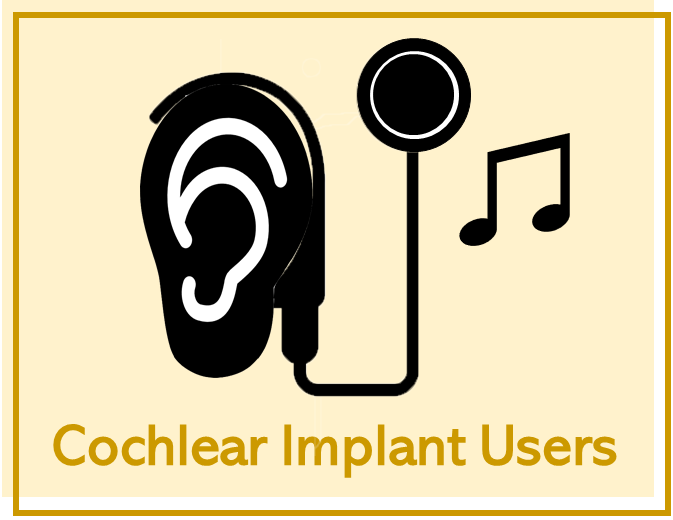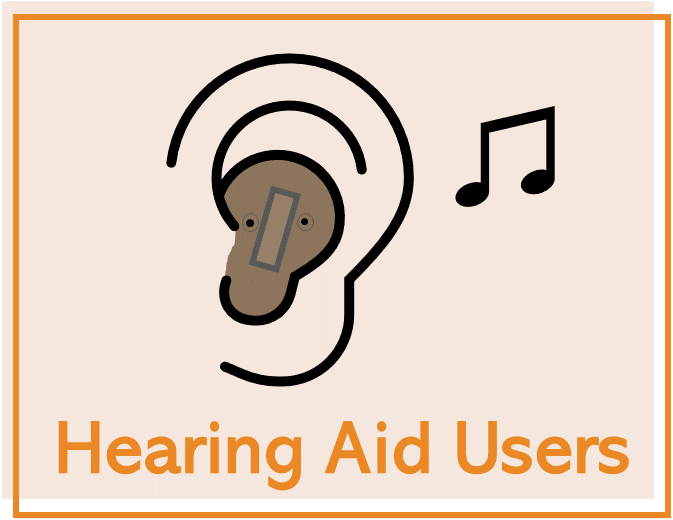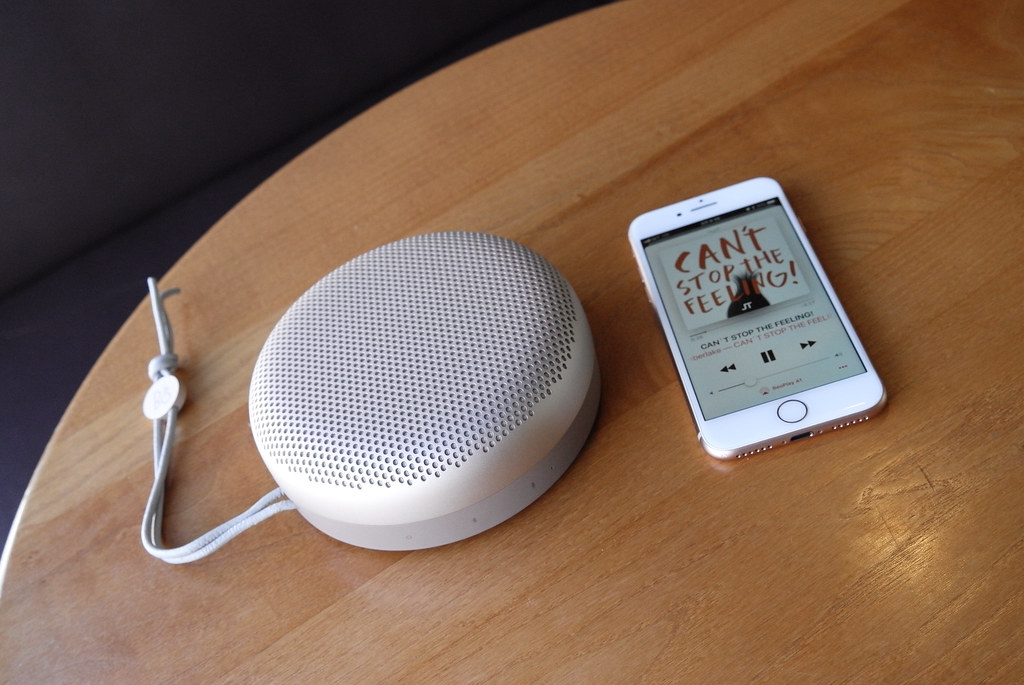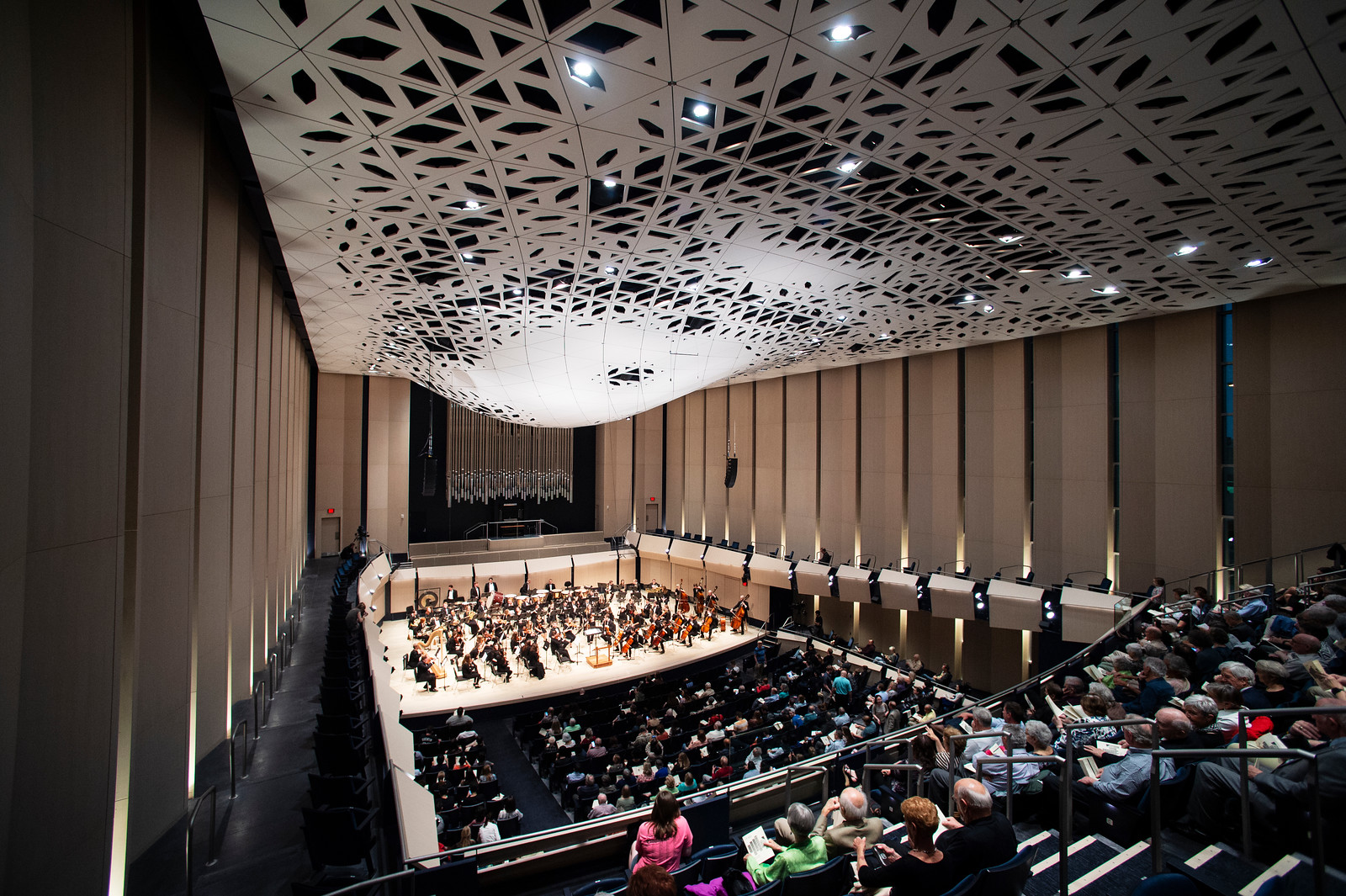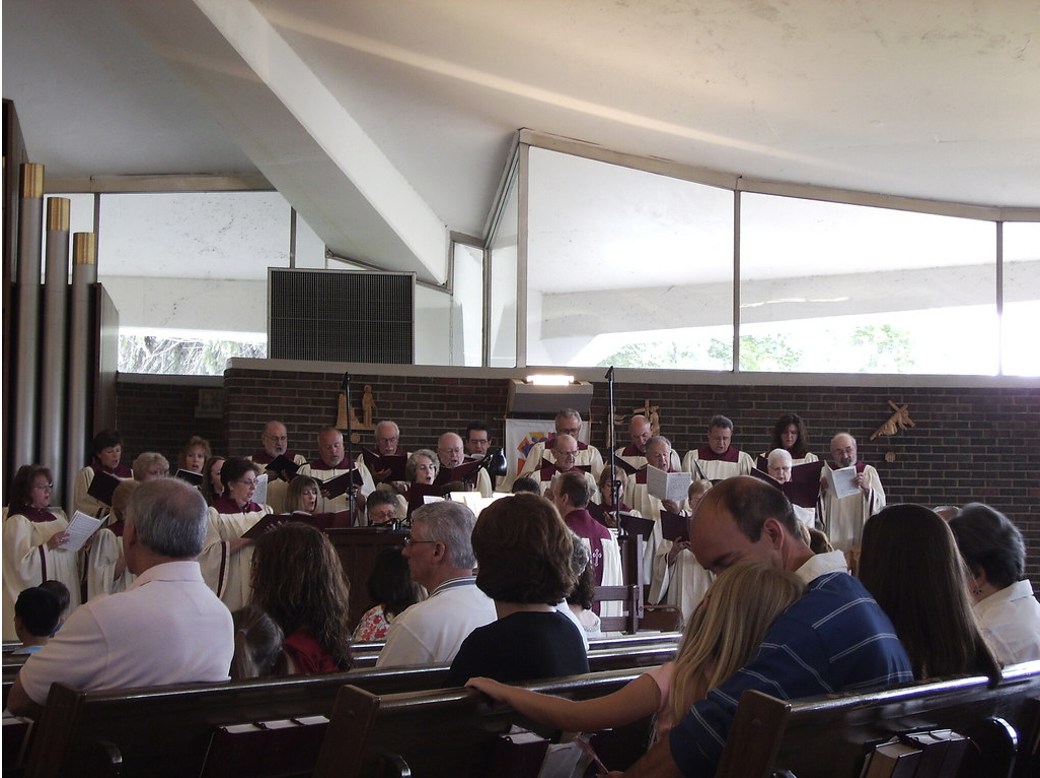See also: Articles on Music, Hearing Loss, and Hearing Devices
As you read this website, keep in mind the following:
-
People with hearing loss can differ in many ways.
-
Some information may be more similar to your situation.
-
Pick and choose the information most useful for you.
NOTE: This webpage is not intended to endorse or advertise specific Assistive Listening Devices (ALDs). Different types of ALDs work with different brands of implants and hearing aids. Check with your audiologist or dispenser to determine which ALDs are compatible with your hearing device.
In many cases, the audiologist or the user can adjust the mix between external sounds and the input sound source. Figuring out how to use certain assistive listening devices (ALDs) can be difficult at first. Ask your audiologist for resources about or instructions for using ALDs. You might schedule an appointment with your audiologist to show you how to use these devices. That service, however, may not be covered by insurance.
Assistive Listening Devices (ALDs): Enhancing Music Listening
Information for Hearing Device Users and Families
Q. What is the purpose of this webpage?
A. To share input from hearing aid (HA) and cochlear implant (CI) users about using assistive listening devices (ALDs) for music listening (Gfeller, Driscoll & Schwalje, 2019; Gfeller et al., 2019)
Q. Why use assistive technologies with your hearing device?
A. Hearing aid (HA) and cochlear implant (CI) users can benefit from assistive listening devices (ALDs). However, different technologies may be more or less useful depending on the situation, the type of music, the environment, and the individual listener.
For years after getting my . . . cochlear implant, I arrogantly thought that the benefit from my implant was all that I needed. I continually brushed off suggestions to use assistive listening devices (ALDs) until it finally occurred to me that if I could hear even better by using such products, particularly in noisy situations, why shouldn't I do so? -Wieker and Tearney (2004)
Personal Assistive Listening Devices and Technology
1, 2
Q. Where can personal ALDs be used to enhance music listening?
A. In public and private settings.
-
Certain technologies may work better in particular situations (such as the gym or home).
-
Experiment. Find which technologies work best for you in different situations.
I prefer to use my phone clip to stream Bluetooth when I’m at the gym. The mini mic is my go-to when I’m at home and working around the house. I’ll hook it into a music player and just let the stream go to my processor while I get stuff done around the house.
Q. What types of personal ALDs do CI recipients use for music enjoyment?
A. There are many types of ALDs:
External Microphones
External microphones help in noisy situations over a distance. The microphone can be placed near the desired sound source for clearer hearing.
Here are some examples:
Mini microphone/Clip-on microphones
-
Wireless clip-on microphones that extend the hearing range of the sound processor.
-
Transmits speech and sound directly to the hearing aid or CI processor; this improves the signal-to-noise ratio.
-
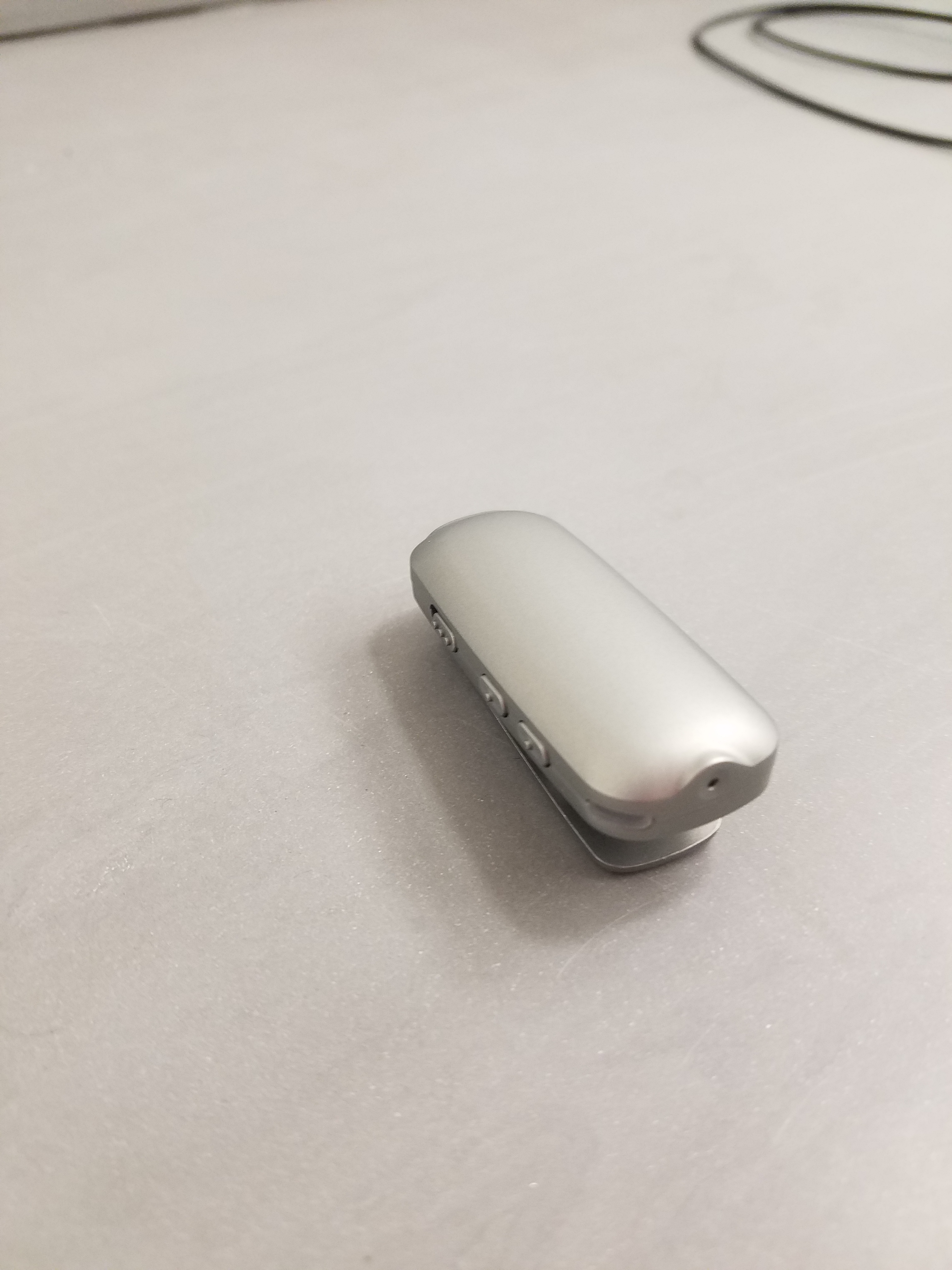
For my sound system, I use the Cochlear Mini Mic with my PC in order to stream sounds directly via Bluetooth to my cochlear implants.
Roger Pen
-
Wireless microphones pick up sound and inputs the audio to your hearing device.
-
You can point it towards a desired sound source, as well as stream audio from multimedia devices.
-
Includes active noise suppression built in to help eliminate background noise.
-
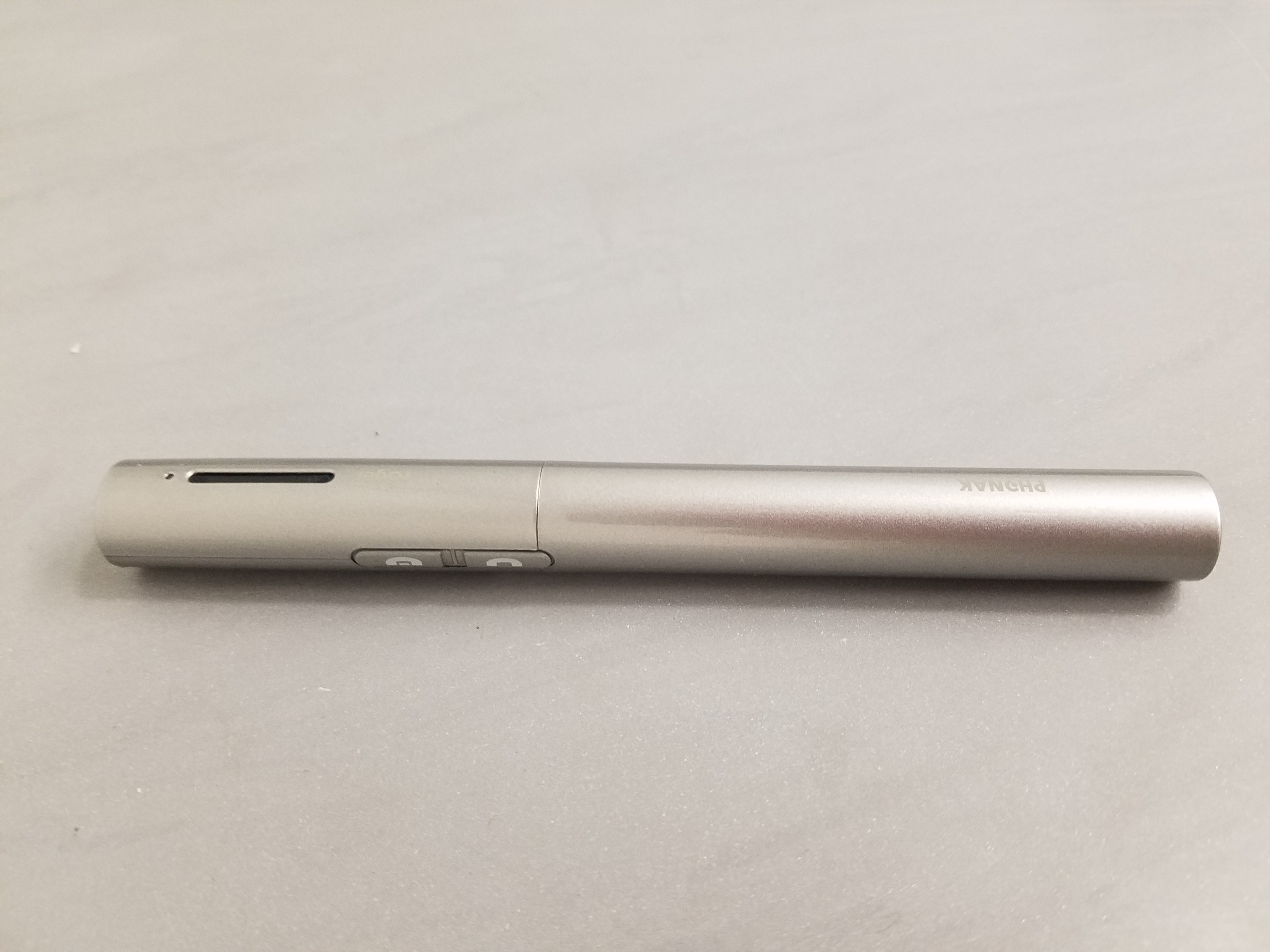
Pointing my Roger Pen at one loud speaker can help.
Wireless Interfaces
Wireless interfaces can stream direct audio straight to your hearing devices. Check what options are compatible with your hearing device.
Below are examples of specific wireless interfaces that can assist in music listening:
TV streamer
-
Streams TV audio directly to your hearing device.
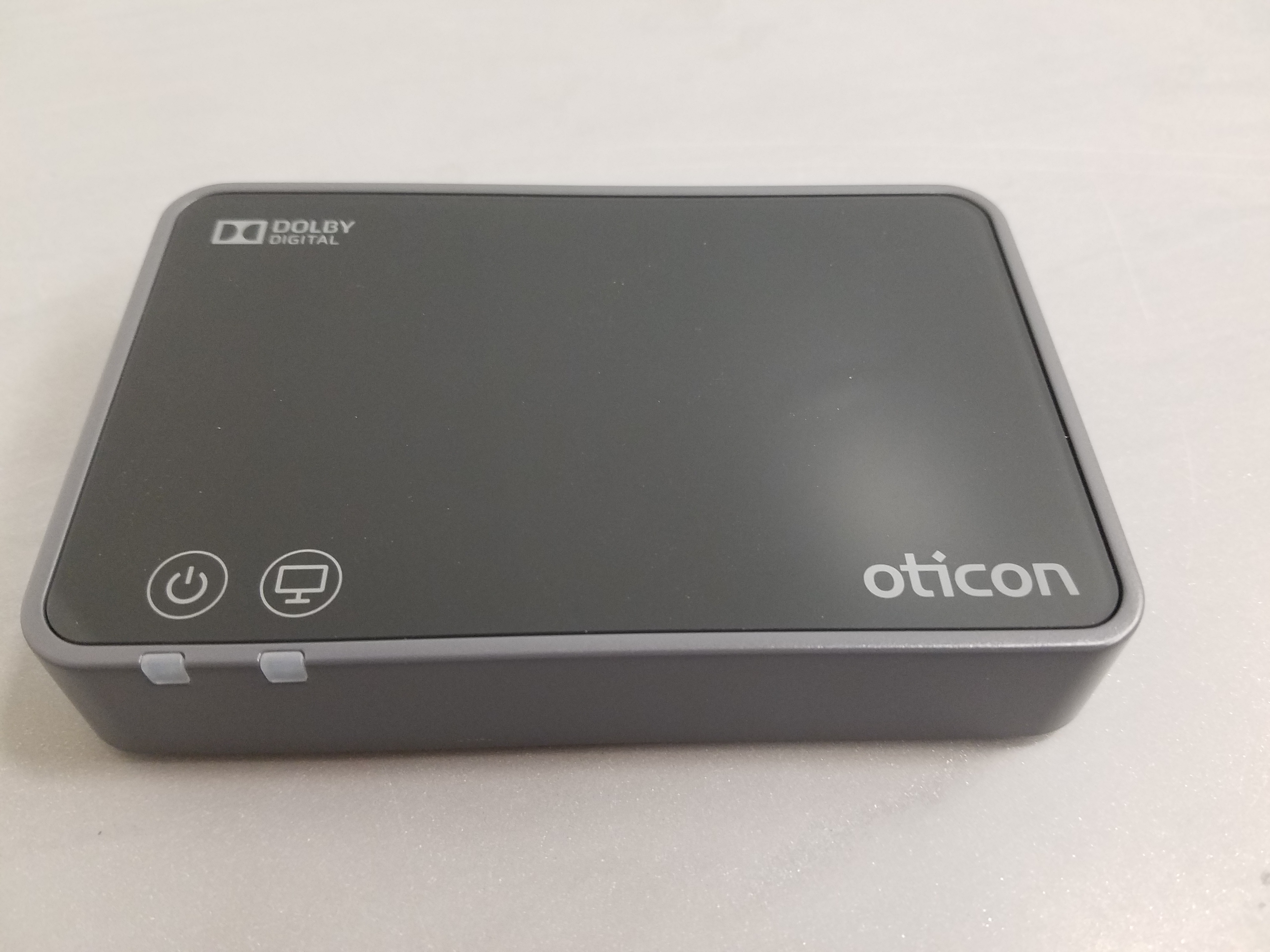
ComPilot
-
Wirelessly connects the hearing aid or CI processor to Bluetooth devices (e.g. phone, MP3 players, stereo, tv) to stream sound.
-
You can also stream sound from audio devices via a cable.
-
This device is worn around the neck to stream sound.
-
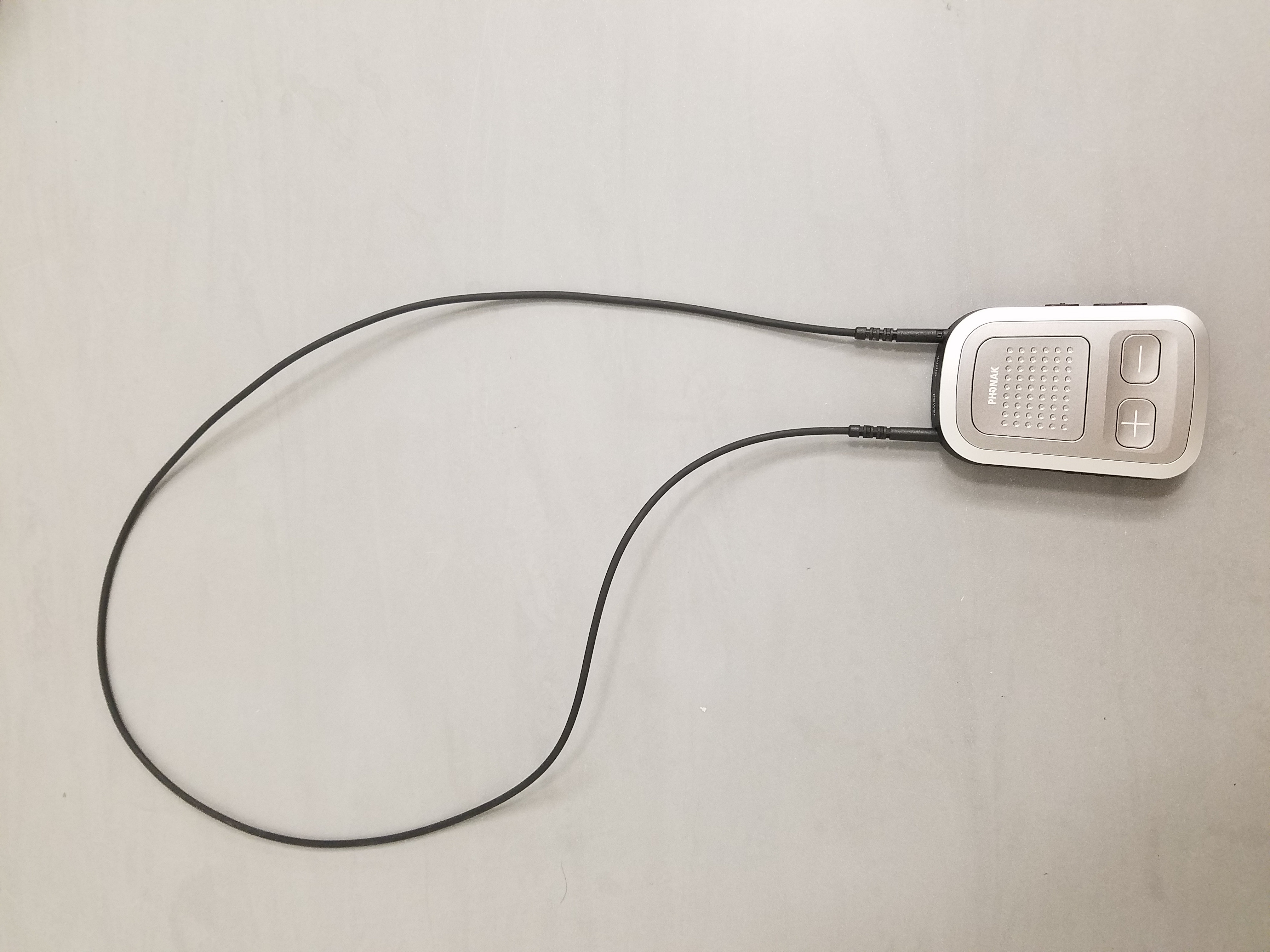
For listening practice, I use my ComPilot and smart phone to tie into Pandora or Spotify.
I recently started using my ComPilot to assist in hearing the TV, and so now I will explore the music channels to see if I can decipher music better.
Phone clip
-
Small, wireless device that sends sound from Bluetooth-enabled phone directly to the sound processor.
-
You can perform basic phone operations, including streaming music.
-
It can be used as a remote for controlling volume and program changes on the sound processor.
-
I’ll actually sometimes use the phone clip when out and about to drown out or dim the external microphones to really bad environmental noise.
I find that I use my phone clip a lot when I’m out and about to listen to my own music rather than listen to the background music (at the grocery store and the gym are two places that come to mind immediately).
Built-in Bluetooth
Some hearing devices have built-in Bluetooth that can connect with multimedia devices to stream audio.
-
This is becoming increasingly common for newer hearing devices.
-
Ask your audiologist or hearing device dispenser for more information.
Direct Audio Input (DAI)
DAI directly connects audio sources (e.g. tv, CD player, or television) with your hearing device. This helps eliminate background noise competing with the sound source. There are many different types of audio input depending upon your hearing device and the sound source. You may wish to ask your audiologist about what works best for your hearing device(s) and listening habits.
Here are just a few of the various DAI options:
-
A special connection at the bottom of the BTE processor
-
Some devices require a “boot” or FM sleeve (e.g. MED-EL processors)
-
A boot that slips over the end of the hearing device; the three-pronged end of the cable connects to the “boot” or FM sleeve, while the other end of the cable connects to the sound source via a standard headphone jack
-
A FM radio receiver attached to the boot to allow for wireless connection
-
Ask your audiologist or hearing device dispenser for advice on what works best for you.
Captioning
Captions can assist with your understanding of the music. You may find open or closed captioning on television or videos, or you may find automated captioning apps specific to lyrics.
Open and closed captioning
-
Open captions are always in view; closed captions can be turned on and off by the user.
-
Captions allow users to follow the lyrics or dialogue simultaneously with the program (e.g. television shows, movies, or music videos).
Following the lyrics on a screen gives me an idea of the sound and tempo.
Subtitles/captioning is a life-saver for reducing effort (and general confusion) when listening to music.
Phone Applications
There are helpful applications available for smartphones. Search for apps that work with your mobile device.
Automated captioning applications
-
Musixmatch: displays lyrics to songs in real-time
-
Genius: integration with lyrics on Spotify
Applications to find quieter places
-
SoundPrint: measures noise level in your environment and recommends quieter places near you (e.g. coffee shops, restaurants).
Assistive Listening Systems in Public Spaces
Q. What are assistive listening systems?
A. Assistive listening systems provide direct sound input in some public places such as concert halls, theaters, and places of worship.
-
Hearing loops cut out unwanted background noise by sending sound directly to the listening device.
-
According to the Hearing Loss Association of America (HLAA), “Loops provide the greatest benefits to people who rely on assistive listening systems, and to venues required by the ADA to provide hearing accommodation.”

*This symbol is often seen in public places that have an assistive listening system available
These listening assistive systems improve listening in noise:
-
Induction loop system
-
FM system
-
Infrared system
-
Soundfield system
The type of hearing device a person wears may determine which assistive listening systems are compatible (Wieker and Tearney, 2004).
Induction loop system
-
Involves a wire cable that sends an electromagnetic signal within the area. The signal is picked up by the telecoil on the receiving hearing device.
-
Two main types:
-
Large area: commonly used in places such as conference rooms, schools, theaters, and churches- can be portable or permanently installed in a room.
-
Personal: worn around the neck or on the ear; transmits the signal picked up by the user through a telecoil.
-
NOTE: Not all hearing devices have a telecoil, so this does not work for everyone.
-
-
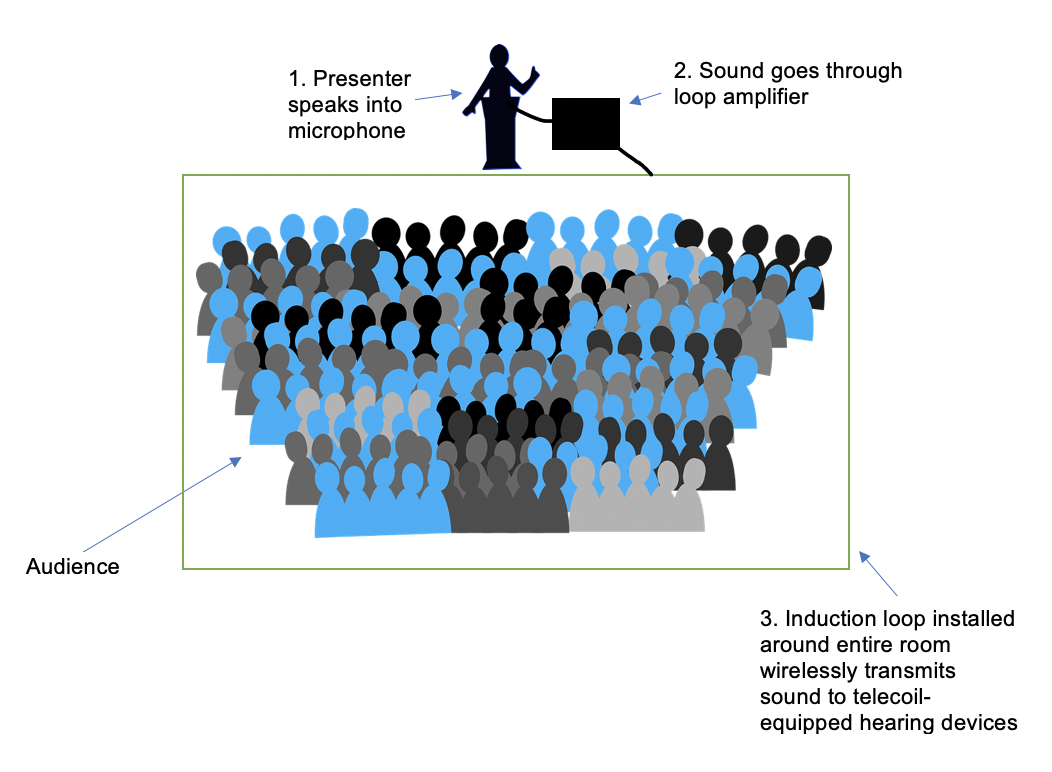
By having one of the programs on my speech processor programmed to 100% telecoil, I can make phone calls in noisy environments, such as airports or restaurants, and be able to hear clearly. - Wieker and Tearney (2004)
FM system
-
Consists of a microphone/transmitter worn by the speaker and a receiver worn by the user. A radio frequency is transmitted from the microphone and directly sent to the person wearing the receiver, resulting in a clearer signal.
-
There are many types of receivers that can be worn by the user, including behind the ear (BTE), neckloop, or body-worn.
-
The signal carries room to room without losing sound quality up to a certain distance.
-
I have received significant benefit from an FM system in noisy restaurants, social receptions, conference rooms, meetings, and even in the car.- Wieker and Tearney (2004)
Another advantage of FM systems is that the signal carries from room to room and does not lose sound quality up to a certain distance (which varies by device). This allows the user to hear a request from another room.- Wieker and Tearney (2004)
Infrared system
-
Uses a microphone to pick up the signal and transmits it via invisible IR light waves. The user wears an IR receiver; the sound can be delivered through a neck loop, headphones, or interface cable for direct audio input.
-
This system can only be used in one room since sound to another room will not carry.
-
Sometimes these systems have ‘dead areas,’ so it may be necessary to try several areas of the room to find the best reception.- Wieker and Tearney (2004)
Soundfield system
-
Consists of a microphone that transmits sound to speakers that are strategically placed around the room.
-
The speakers are portable and can typically provide a 10-15 dB advantage.
-
This system is very compatible since it does not require any specialized circuit or connecting cords (Wieker and Tearney, 2004).
-
Communication Access Realtime Translation (CART) may also be available in public settings.
-
Text is translated in real-time and may be displayed on a big screen, computer/laptop, or streamed to an Internet browser.
-
CART can combine with listening assistive systems such as induction loops, FM, and infrared systems for the highest level of accessibility.
I go to some concerts. I do not understand the words and need CART.
Captioning, video or live musical performance, enhances the experience.
References
Buechner, A., Krueger, B., Klawitter, S., Zimmermann, D., Fredelake, S., & Holube, I. (2020). The perception of the stereo effect in bilateral and bimodal cochlear implant users and its contribution to music enjoyment. PLOS ONE, 15(7), e0235435. https://doi.org/10.1371/journal.pone.0235435
Chisolm, T. H., Noe, C. M., McArdle, R., & Abrams, H. (2007). Evidence for the use of hearing assistive technology by adults: The role of the FM system. Trends in Amplification, 11(2), 73–89. https://doi.org/10.1177/1084713807300879
Cochlear (n.d.). Cochlear wireless mini microphone 2 & 2+. Retrieved July 24, 2020, from https://www.cochlear.com/us/en/professionals/products/cochlear-wireless/...
Cochlear (n.d.). Cochlear wireless phone clip. Retrieved July 24, 2020, from https://www.cochlear.com/us/en/professionals/products/cochlear-wireless/...
FM Hearing Systems (n.d.). What is a Phonak Roger Pen and how does it work? Retrieved July 24, 2020, from https://www.fmhearingsystems.co.uk/blog/what-is-a-roger-pen-and-how-does...
Healthy Hearing (2020). FM systems for people with hearing loss. Retrieved August 17, 2020, from https://www.healthyhearing.com/help/assistive-listening-devices/fm-systems
Hearing Link (n.d.). What is a hearing loop? Retrieved July 24, 2020, from https://www.hearinglink.org/living/loops-equipment/hearing-loops/what-is...
Hearing Loss Association of America (HLAA) (n.d.-a). Captioning and CART. Retrieved August 7, 2020, from https://www.hearingloss.org/hearing-help/technology/cartcaptioning/
Hearing Loss Association of America (HLAA) (n.d.-b). Hearing loop technology. Retrieved July 24, 2020, from https://www.hearingloss.org/hearing-help/technology/hat/hearing-loop-tec...
Kim, J. S., & Kim, C. H. (2014). A review of assistive listening device and digital wireless technology for hearing instruments. Korean Journal of Audiology, 18(3), 105. https://doi.org/10.7874/kja.2014.18.3.105
Phonak (n.d.). Phonak ComPilot user guide. Retrieved July 24, 2020, from https://advancedbionics.com/content/dam/advancedbionics/Documents/Global...
Vroegop, J. L., Dingemanse, J. G., Homans, N. C., & Goedegebure, A. (2017). Evaluation of a wireless remote microphone in bimodal cochlear implant recipients. International Journal of Audiology, 56(9), 643–649. https://doi.org/10.1080/14992027.2017.1308565
Washington University Physicians (n.d.). Induction loop systems. Adult Audiology. Retrieved July 24, 2020, from http://hearing.wustl.edu/Hearing-Assistive-Technology/Hearing-Assistive-...
Wieker, A., & Tearney, L. (2004). A cochlear implant user’s guide to assistive devices and telephones. The Hearing Journal, 57(11), 20–27. https://doi.org/10.1097/01.HJ.0000324403.49520.1a
Click here to review references used in preparation of this website.
1. All images on this website are used under Creative Commons or other licenses or have been created by the website developers.
2. Click here to access the sources of images on this page.
